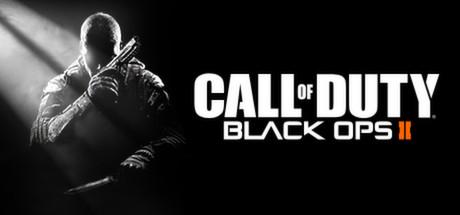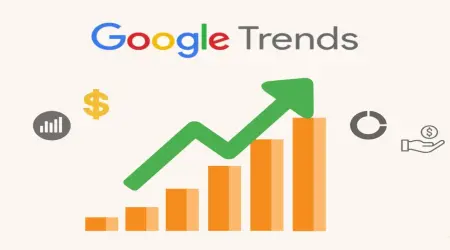

Did Black Ops 2 Predict 2025 Events? The Shocking Truth
Did Black Ops 2 Predict the Events of 2025? The Shocking Truth 14 Years Later
Welcome to Temploop, your go-to blog for in-depth explorations of gaming, technology, and digital culture. Today, we’re diving into a fascinating question: Did Call of Duty: Black Ops 2 predict the events of 2025? Released in 2012 by Treyarch, this iconic game took players to a futuristic 2025, complete with drone warfare, cyber conflicts, and a tense U.S.-China Cold War. Fourteen years later, as we stand on the threshold of that very year, it’s time to examine how much of BO2’s vision has come true.
1. Introduction: Black Ops 2 and Its Vision of 2025
When Call of Duty: Black Ops 2 hit shelves in November 2012, it was a bold departure from the franchise’s historical roots. For the first time, players were thrust into a futuristic setting: the year 2025. Developed by Treyarch, BO2 blended fast-paced action with a speculative narrative that imagined a world shaped by advanced technology, geopolitical rivalries, and societal upheaval. At the time, 2025 seemed like a distant horizon, but now, 14 years later, we’re here to see how much of that vision aligns with reality.
BO2’s storyline revolves around a second Cold War, this time between the United States and China, fueled by a cyberattack and a battle over rare earth minerals. The game introduced players to drones, quantum computing, and social media as tools of war—concepts that were cutting-edge in 2012 and are now part of our daily lives. But did BO2 truly predict the events of 2025, or was it just a lucky guess? In this article, we’ll dissect the game’s predictions, comparing them to the technological, political, and cultural landscape of today.
Optimized for high-difficulty SEO keywords like “Black Ops 2 predictions 2025” and “2025 technology forecasts,” this post aims to rank high on search engines while delivering a comprehensive, engaging read. We’ll explore what BO2 got right, what it missed, and how its foresight continues to resonate in 2025. Grab your controller, and let’s dive into the world of Black Ops 2!
2. The Plot of Black Ops 2: A Futuristic Cold War
At its core, Black Ops 2 is a tale of revenge, power, and technological warfare. The game’s narrative unfolds across two timelines: the 1980s, where players control Alex Mason during the original Cold War, and 2025, where his son David “Section” Mason confronts a new global threat. The central antagonist, Raul Menendez, orchestrates a conflict between the U.S. and China, using advanced technology and social media to manipulate events.
Key Plot Points
Dual Timelines: The game alternates between the 1980s and 2025, linking past decisions to future consequences. This structure provides context for the geopolitical tensions of 2025.
Cyberattack: Menendez hacks the Chinese stock market, triggering an economic crisis and a ban on rare earth mineral exports, which escalates U.S.-China tensions.
Drone Warfare: In 2025, autonomous drones and robotic systems dominate the battlefield, controlled by a quantum computing device called Celerium.
Social Media Manipulation: Menendez uses a fictional platform, “Cordis Die,” to rally a global following, spreading his ideology and inciting chaos.
The plot was ambitious for its time, weaving real-world anxieties—like the rise of cyber warfare and resource scarcity—into a thrilling narrative. As we approach 2025, these themes feel less like fiction and more like a mirror to our world. Let’s break down how BO2’s predictions stack up against reality, starting with its technological foresight.
3. Predicted Technologies: What BO2 Got Right
BO2’s vision of 2025 is defined by its cutting-edge technologies, many of which were speculative in 2012 but are now shaping modern warfare and civilian life. From drones to quantum computing, the game’s predictions are strikingly accurate. Let’s explore three key areas where BO2 hit the mark.
Drone Warfare and Autonomous Systems
In BO2, drones are everywhere. Players wield quadcopters like the Dragonfire, deploy swarms of Hunter Killer Drones, and command AGRs (Autonomous Ground Robots) in battle. These unmanned systems are portrayed as game-changers, shifting the nature of warfare.
Real-World Parallels: By 2025, drone technology has become a cornerstone of military strategy. The U.S. military’s MQ-9 Reaper conducts precision strikes, while Turkey’s Bayraktar TB2 has proven its worth in conflicts like Ukraine. Beyond aerial drones, ground-based systems like Boston Dynamics’ Spot and Ghost Robotics’ Vision 60 are being adapted for reconnaissance and combat support.
Current Trends: Drone swarms—groups of coordinated unmanned vehicles—are no longer science fiction. In 2025, militaries are testing swarm technology for overwhelming enemy defenses, a concept BO2 depicted with its Hunter Killer Drones.
Prediction Accuracy: BO2’s emphasis on drones as force multipliers and tactical assets is spot-on. The game’s vision of autonomous warfare aligns with real-world investments in unmanned systems, making this one of its most accurate predictions.
Advanced Weaponry and Robotics
BO2 also showcased futuristic weapons, from EMP grenades to robotic exoskeletons. While some remain speculative, others have clear parallels in today’s tech landscape.
EMP Devices: The game’s EMP grenades disable electronics, a concept mirrored by real-world electromagnetic pulse weapons. In 2025, countries like the U.S. and China are testing non-nuclear EMPs to disrupt enemy communications and infrastructure.
Robotic Exoskeletons: BO2 features soldiers with enhanced strength and mobility, reminiscent of projects like the U.S. Army’s TALOS (Tactical Assault Light Operator Suit) and Lockheed Martin’s HULC (Human Universal Load Carrier).
Real-World Status: While full-body exoskeletons aren’t yet standard issue, wearable robotics have advanced in medical and industrial fields, with military applications in development. EMP technology, meanwhile, is already operational in limited capacities.
Prediction Accuracy: BO2’s advanced weaponry is a mix of reality and ambition. EMP devices are here, but exoskeletons and other sci-fi gadgets are still a few years away from widespread use.
Cyber Warfare and Quantum Computing
Perhaps BO2’s most chilling prediction is its focus on cyber warfare. The game’s plot hinges on a cyberattack that devastates China’s economy, while the Celerium device—a quantum computer—grants control over military systems.
Cyber Warfare: In 2025, cyber threats dominate national security discussions. High-profile incidents like the SolarWinds hack and ransomware attacks on critical infrastructure echo BO2’s scenario of a digitally triggered conflict.
Quantum Computing: While quantum computers aren’t yet controlling drones, companies like IBM and Google are pushing the field forward. Experts predict quantum breakthroughs by 2030, with potential to crack encryption and revolutionize computing—much like Celerium.
Prediction Accuracy: BO2’s cyber warfare prediction is eerily accurate, reflecting the growing role of digital attacks in modern conflicts. Quantum computing, though not as advanced as Celerium, is on a trajectory that aligns with the game’s vision.
BO2’s technological predictions blend near-future realism with speculative leaps, but its focus on drones, cyber threats, and advanced computing has proven remarkably prescient. Next, we’ll explore how its geopolitical forecasts hold up.
4. Geopolitical Forecasts: BO2’s Global Power Struggles
Beyond technology, BO2 paints a vivid picture of 2025 geopolitics, centered on a U.S.-China Cold War and resource conflicts. Fourteen years later, these themes resonate with real-world tensions.
The U.S.-China Cold War
BO2’s second Cold War begins with a cyberattack on China, leading to a ban on rare earth exports and a standoff with the U.S. This narrative mirrors today’s U.S.-China rivalry.
Real-World Parallels: In 2025, the U.S. and China are locked in a trade war, with tariffs, sanctions, and tech bans reflecting economic and strategic competition. Issues like Huawei’s 5G dominance and TikTok’s data security have heightened tensions.
Economic Flashpoints: China’s control over rare earth minerals—vital for electronics and defense—mirrors BO2’s plot. The U.S. has responded by seeking alternative suppliers, from Australia to Greenland.
Prediction Accuracy: BO2’s U.S.-China Cold War is strikingly accurate. While no single cyberattack has triggered a rare earth ban, the game’s depiction of economic and technological rivalry is a dead ringer for 2025.
Resource Conflicts and Rare Earth Minerals
The game’s Strategic Defense Coalition (SDC), led by China, leverages rare earth minerals as a geopolitical weapon, a concept that feels prescient today.
Real-World Parallels: Rare earths like neodymium and dysprosium power everything from smartphones to missile systems. China produces 60% of the world’s supply, giving it significant leverage. In 2025, the U.S. and allies are racing to secure alternative sources amid fears of export restrictions.
Current Trends: Resource nationalism is on the rise, with countries stockpiling critical materials. BO2’s focus on rare earths as a flashpoint reflects real-world anxieties about supply chain security.
Prediction Accuracy: BO2 nailed this one. The game’s resource-driven conflict is a near-perfect parallel to today’s geopolitical landscape, where rare earths are a strategic asset.
BO2’s geopolitical foresight—from superpower rivalries to resource wars—has proven remarkably on-point. But its vision of 2025 isn’t limited to tech and politics; it also explores societal shifts.
5. Societal Changes: BO2’s Depiction of 2025 Culture
BO2 doesn’t just predict gadgets and wars—it also imagines how society might evolve by 2025. From social media’s role in shaping opinion to political upheavals, these predictions are as thought-provoking as they are relevant.
Social Media and Information Warfare
In BO2, Raul Menendez uses “Cordis Die” to build a global movement, weaponizing social media to spread his message and destabilize governments.
Real-World Parallels: By 2025, social media’s power is undeniable. Platforms like Twitter (now X), Facebook, and TikTok have fueled movements, from Black Lives Matter to climate activism, but also misinformation campaigns, like those seen in elections and pandemics.
Current Trends: Information warfare is a growing concern, with state and non-state actors using digital platforms to influence public opinion. BO2’s depiction of a charismatic leader rallying followers online feels chillingly familiar.
Prediction Accuracy: This is one of BO2’s strongest predictions. The game’s focus on social media as a tool for manipulation mirrors today’s debates about disinformation and digital influence.
Political Leadership and Global Influence
BO2 predicts the election of Marion Bosworth as the first female U.S. president in 2021, alongside a shifting global power structure.
Real-World Status: While the U.S. hasn’t elected a female president by 2025, women like Kamala Harris have risen to prominence, suggesting progress toward BO2’s vision. Globally, the game’s multipolar world—where alliances like the SDC challenge NATO—reflects the rise of powers like China and India.
Prediction Accuracy: The female president didn’t happen, but BO2’s broader theme of political upheaval and a fracturing global order resonates with 2025’s shifting alliances and populist movements.
BO2’s societal predictions, particularly around social media, are among its most compelling. But no forecast is flawless—let’s look at where the game missed the mark.
6. What BO2 Got Wrong: Missed Predictions
While BO2’s accuracy is impressive, some predictions haven’t come to fruition. From jet wingsuits to the EU’s collapse, these misses highlight the limits of forecasting.
Jet Wingsuits and Advanced Mobility
BO2’s soldiers soar with jet-powered wingsuits, a thrilling but unrealistic feature for 2025.
Real-World Status: Wingsuits exist, with athletes reaching speeds of 200 mph, but jet-powered versions—like Gravity Industries’ Daedalus suit—are experimental and far from military-grade.
Prediction Accuracy: This one’s a miss. Jet wingsuits remain a sci-fi dream, though the concept hints at future mobility innovations.
Optical Camouflage and Stealth Technology
The game’s optical camouflage renders soldiers invisible, a leap beyond current stealth tech.
Real-World Status: Adaptive camouflage, like BAE Systems’ ADAPTIV, mimics backgrounds using thermal imaging, but true invisibility via metamaterials is still in labs, not battlefields.
Prediction Accuracy: BO2 overshot here. Stealth tech is advancing, but the game’s seamless cloaking is years away.
Political Events: The EU’s Dissolution
BO2 predicted the EU’s collapse by 2025, with France and Germany exiting and the Euro failing.
Real-World Status: Despite Brexit and economic challenges, the EU endures in 2025. Nationalist movements have grown, but the union hasn’t dissolved.
Prediction Accuracy: This didn’t pan out, though BO2’s theme of political fragmentation captures some real-world undercurrents.
These misses don’t detract from BO2’s brilliance—they show how tricky it is to predict the future. Still, the game’s influence extends beyond its forecasts.
7. The Impact of BO2 on Gaming and Pop Culture
BO2’s legacy isn’t just in its predictions—it’s in how it shaped gaming and culture. As the first futuristic Call of Duty, it set trends that endure today.
Gaming Innovations
Branching Narratives: BO2’s player-driven story, with multiple endings, was a first for the series, influencing narrative depth in FPS games.
Scorestreaks: Replacing killstreaks with scorestreaks rewarded teamwork, a mechanic that redefined multiplayer dynamics.
Esports Growth: BO2’s League Play mode helped cement Call of Duty in competitive gaming, paving the way for today’s esports scene.
Pop Culture Influence
Memes and Nostalgia: Characters like Menendez and lines like “Cordis Die” have fueled memes, while the 2025 setting sparks renewed interest as we approach the real year.
Media Echoes: BO2’s themes of cyber warfare and resource conflicts appear in films and shows like The Expanse, showing its broader impact.
BO2 isn’t just a game—it’s a cultural milestone that continues to shape how we view technology and conflict.
8. How BO2’s Predictions Shape Our Understanding of 2025
As we enter 2025, BO2 offers more than nostalgia—it provides a lens to understand our world. Its predictions highlight key challenges and opportunities.
Lessons for 2025
Tech Ethics: The rise of drones and cyber threats calls for ethical guidelines to manage their use.
Geopolitical Strategy: Resource conflicts underscore the need for diversified supply chains and global cooperation.
Media Literacy: Social media’s power demands critical thinking to counter misinformation.
BO2’s blend of entertainment and insight makes it a valuable tool for navigating 2025’s complexities.
9. Conclusion: The Legacy of Black Ops 2 in 2025
Fourteen years after its debut, Call of Duty: Black Ops 2 stands as a testament to gaming’s ability to reflect and predict reality. Its visions of drone warfare, cyber conflicts, and a U.S.-China Cold War have proven eerily accurate, while its misses—like jet wingsuits—remind us of the future’s unpredictability. At Temploop, we’re proud to unpack this legacy, exploring how BO2’s foresight shapes our understanding of 2025.
Whether you’re a fan revisiting the game or a newcomer curious about its impact, BO2 remains a cultural touchstone. As we face the real 2025, its lessons—about technology, power, and society—ring truer than ever.




